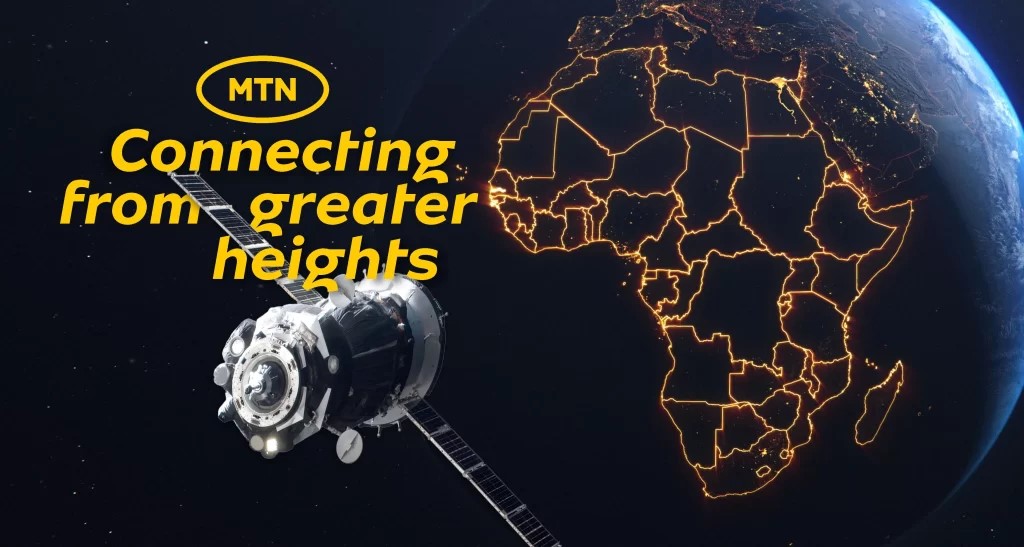According to an official statement released by the MTN Group, the mobile telecommunications provider is currently exploring low earth orbit (LEO) satellite solutions in collaboration with operators like SpaceX’s Starlink and Eutelsat OneWeb. This initiative aims to bridge connectivity gaps in remote regions and enhance network resilience in areas where cellular infrastructure faces challenges.
MTN recognises the challenges that impede widespread broadband access within the telecommunications industry, citing obstacles, including coverage gaps, expensive devices, unaffordable data, and limited digital literacy. Encouragingly, recent progress has been noted, as per GSMA’s findings, indicating a substantial decrease in the coverage gap in sub-Saharan Africa from 50% in 2014 to 17% in 2022.
However, to ensure comprehensive coverage and address the remaining 17%, MTN Group is gearing up to “explore the skies” to swiftly connect those lacking access, particularly in remote and underserved areas. This initiative aligns with their Ambition 2025 strategic intent of “leading digital solutions for Africa’s progress.” Their goal is to achieve 95% broadband population coverage across their footprint by 2025, a significant increase from 88% in 2022, while striving for universal access in the long term.
According to Mazen Mroué, MTN Group’s Chief Technology and Information Officer, “LEO satellites typically orbit the Earth at altitudes of between 160 and 2,000 km, making for shorter orbital periods (of between 90 minutes and a few hours), which is good for applications that need rapid data communication or frequent re-visits of specific areas. In addition, the sharp fall in the cost of launching 1kg of payload into space (from USD 85,000 in the 1980s to around USD 1,000 now) has increased the attractiveness of using LEO satellites.”
To implement this plan, MTN outlines two diverse yet symbiotic LEO-based solutions. The first solution employs device-agnostic direct-to-cellular technology for underserved regions, ensuring compatibility with existing mobile units without requiring special modifications. The second solution utilises LEO satellites to provide critical fixed connectivity for enterprise customers and efficient backhaul connectivity for MTN cellular sites. This approach is particularly relevant in remote and rural locations, offering a more affordable and efficient alternative.
Furthermore, MTN highlights its ongoing initiatives and partnerships with Lynk Global, AST SpaceMobile, SpaceX’s Starlink, and Eutelsat OneWeb, aiming to leverage satellite technology for broader connectivity. These initiatives are set to achieve several milestones, commencing with the proposed direct-to-cell trials in South Africa and Ghana in collaboration with Lynk Global. Additionally, MTN is engaged in discussions with AST SpaceMobile for similar trials in Nigeria and South Sudan, and the company has committed to enterprise-grade satellite broadband trials in Rwanda and Nigeria through SpaceX’s Starlink. Moreover, ongoing discussions with Eutelsat OneWeb involve plans for a satellite broadband pilot in South Africa.
The announcement also outlined the financing model for the group, citing a standard revenue-sharing arrangement where MTN serves as the customer, utilising satellite infrastructure owned by the LEO satellite vendor.
Prior to this announcement, MTN had conducted successful trials in remote locations, such as the demonstration in Gowehn, Liberia, showcasing direct mobile connectivity through satellite base stations. Additionally, through its fruitful collaboration with Omnispace, MTN aims to broaden wireless services by exploring S-band satellite services and capitalising on existing mobile networks with non-terrestrial networks for consumer mobile and enterprise IoT services.
Credit: Space in Africa



